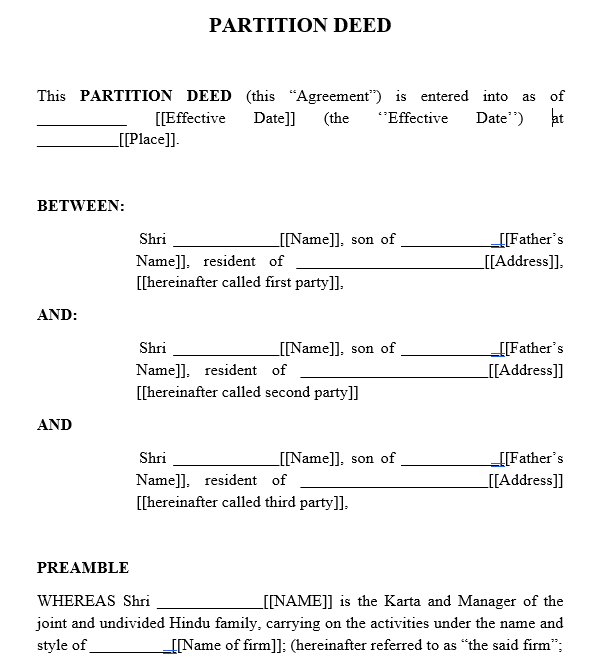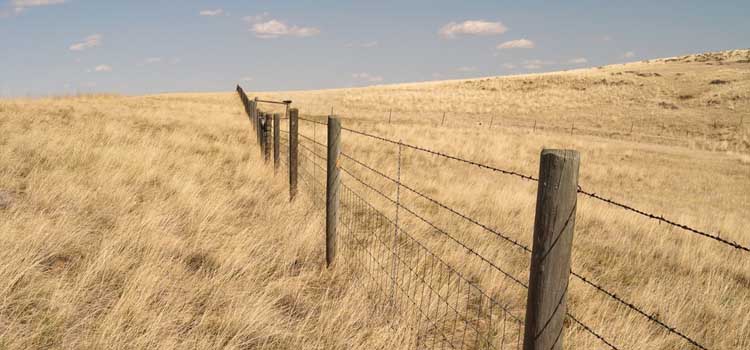




Table of Contents
- Introduction
- What is a Partition Deed?
- Types of Partition Deeds
- Key Components of a Partition Deed
- Step-by-Step Guide to Registering a Partition Deed
- Conclusion
- Faq's
Introduction
A partition deed is a legal document that divides property among its co-owners, who may be family members or unrelated parties. Particularly among siblings or relatives, this process helps in the amicable division of ancestral or jointly owned property, ensuring each party receives a fair share without necessitating a sale and division of proceeds. This guide delves into what a partition deed entails, its types, the registration process, and other pertinent aspects.
 Sample Partition Deed Document
Sample Partition Deed Document
What is a Partition Deed?
A partition deed is used to legally divide property among its owners so that each owner ends up with a distinct part of the property. This is particularly common among family members, such as between two brothers or among several siblings. The deed delineates the boundaries and ownership details of the portions assigned to each party, transforming what was once a shared ownership into separate titles.
 Land Partition
Land Partition
Types of Partition Deeds
- Partition Deed Among Family Members: This is the most common form, often used to divide property among siblings or parents and children. The property could be residential, agricultural, or commercial.
- Partition Deed Between Two Brothers: This focuses on the division between just two individuals, usually straightforward unless the property values are significantly varied.
- HUF (Hindu Undivided Family) Partition Deed: Specifically used in the context of Hindu Undivided Families, this type addresses the division of property among HUF members.
- Partition Deed of Ancestral Property: Deals with property that has been inherited across generations, requiring sensitive handling to respect the legal and emotional aspects involved.
Key Components of a Partition Deed
Here are the fundamental components generally included in a partition deed:
- Involved Parties: Lists all individuals, such as co-owners or family members, who are part of the partition deed, providing their full names and relevant details.
- Description of Property: Offers a comprehensive description of the property subject to division. This includes its exact boundaries, location, and any additional details crucial for its precise identification.
- Allocation of Shares: Details how the property is divided among the co-owners, which could be noted in percentage terms or as specific sections of the property designated to each party.
- Rights and Obligations: The deed may outline each co-owner's rights and duties related to the property's use, upkeep, and management, including responsibilities for taxes, repairs, or other costs.
- Conflict Resolution: Includes clauses for resolving disputes or particular stipulations concerning potential future disagreements among the co-owners.
- Signatures: Requires the signatures of all parties involved, executed in the presence of witnesses and potentially notarized, to validate the deed.
These elements ensure that the partition deed is thorough and legally binding, providing clear guidelines and responsibilities to all parties involved.
Step-by-Step Guide to Registering a Partition Deed
The process for registering a partition deed can differ slightly based on local regulations, but it typically includes the steps outlined below:
1. Drafting the Deed: Engage a legal expert to assist in creating the partition deed. Ensure the deed comprehensively details the partition agreement, including the full names of all parties, descriptions of the properties involved, and the specific shares allocated to each party.
2. Payment of Stamp Duty: Fulfill the required stamp duty payment, which depends on the property value and location as dictated by local law.
3. Notarization: Have the partition deed notarized. This step involves signing the deed before a notary public, who will verify the signatures and apply their official seal to the document.
4. Registration: Take the notarized deed to the office of the sub-registrar or another relevant property registration authority. Alongside the deed, submit all necessary accompanying documents, such as identification for all parties, property documentation, and evidence of stamp duty payment.
5. Verification and Execution: The registrar will examine the documents. If additional verification is needed, inquiries will be made. Assuming all documentation is in order, the parties involved must appear at the registrar's office as scheduled to sign the deed before the registrar.
6. Pay Registration Fees: At this stage, pay the registration fees, typically calculated based on the property value involved in the partition.
7. Document Submission and Collection: Following registration, the original deed will be held by the registrar, and you will be issued certified copies of the registered partition deed. These copies are official records of the partition and may be used for any legal or formal purposes henceforth.
This structured approach ensures that the partition deed is legally recognized and enforceable, safeguarding the rights of all parties involved.
Conclusion
A partition deed is a practical solution for dividing property among co-owners while avoiding the complications and emotional strain of selling the property. Understanding its nuances, from drafting to registration, ensures that all parties involved receive their fair share in a manner that is legally sound and amicable. Whether it's property among siblings or parts of a Hindu Undivided Family estate, having a clear and registered partition deed helps maintain harmony and clarity. Consulting with legal professionals and ensuring proper valuation and documentation can further smooth the process, making the division of property a straightforward and conflict-free affair.
explore further
Latest from Contemporary ideas
More from Innovations
Resources
Dwello, for every home buyer, is a way to go from 'I feel' to 'I know', at no extra cost.




